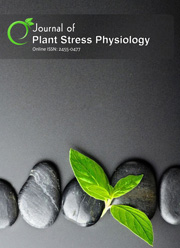Growth performance of Ceriops decandra propagules as infl uenced by plant growth regulator: A conservation eff ort
Abstract
Vegetative propagation could be an important advantage and also envisioned to be the best alternative for planting stock production in the absence or lack of seeds. In Pichavaram, mangrove forest Tamil Nadu, the Ceriops decandra (Rhizophoraceae) is one of the most endangered species and IUCN also declared this species as near threatened. Propagation of C. decandra, by propagule cuttings, treated with plant growth regulators (PGRs) is feasible and it was possible to produce three saplings from one propagule. The effect of PGRs like indole butyric acid (IBA), naphthalene acetic acid (NAA), gibberellic acid (GA3 ) on propagule cuttings of C. decandra were studied and the results revealed that best growth performance was recorded when the cuttings were treated with GA3 2000 ppm. The combination of NAA and IBA increased the rooting and leaf formation. Among the treatments, GA3 enhanced the number of leaves and roots, shoot and root length, fresh and dry weight of roots increased to a larger extent. All the plants are transferred to field in the mangrove forest of Pichavaram, TamilNadu, India.Downloads
Download data is not yet available.
Published
16-11-2015
How to Cite
A. Arunprasath, M. G. “Growth Performance of Ceriops Decandra Propagules As Infl Uenced by Plant Growth Regulator: A Conservation Eff Ort”. Journal of Plant Stress Physiology, vol. 1, Nov. 2015, pp. 1-6, https://updatepublishing.com/journal/index.php/jpsp/article/view/2821.
Issue
Section
REGULAR ISSUE ARTICLES



 .
.